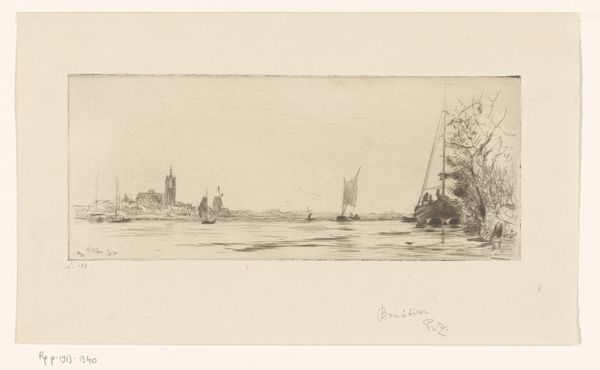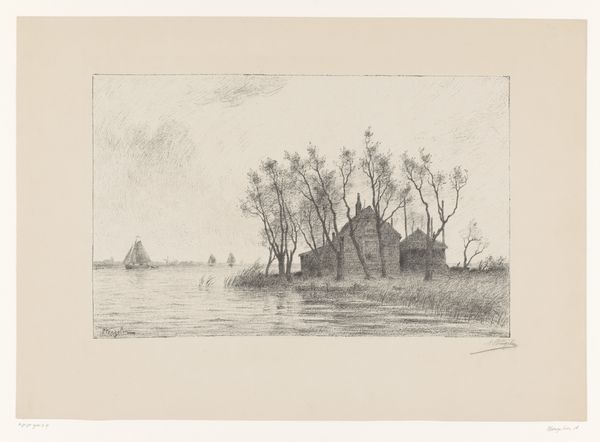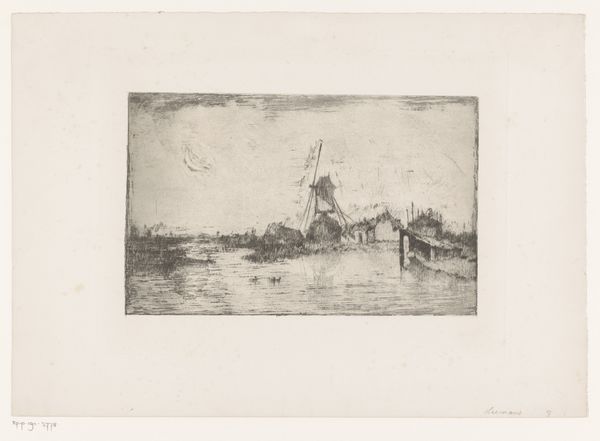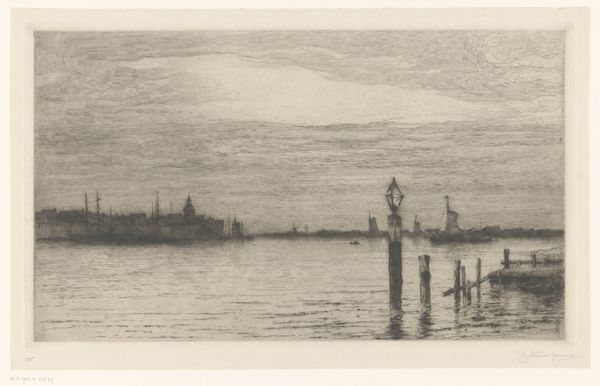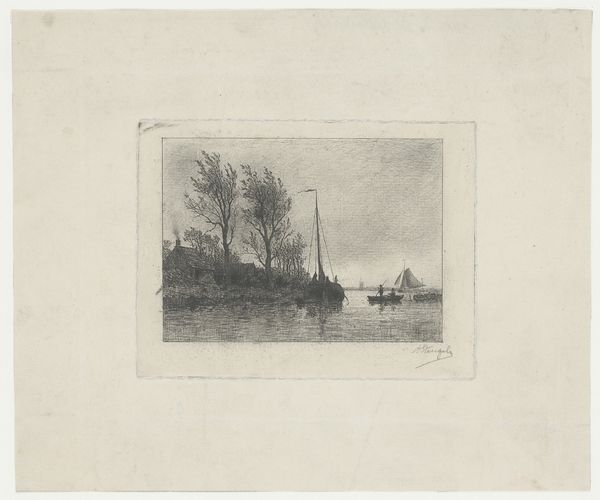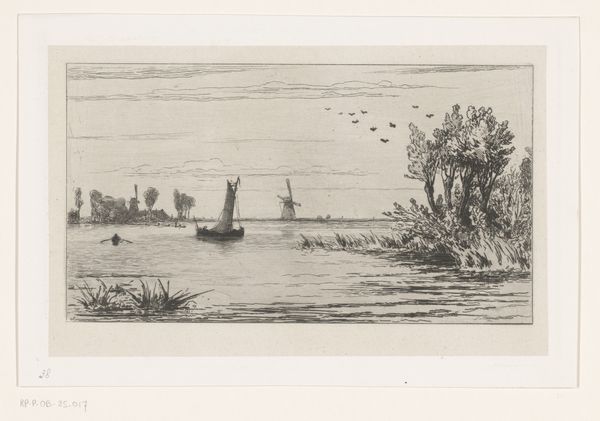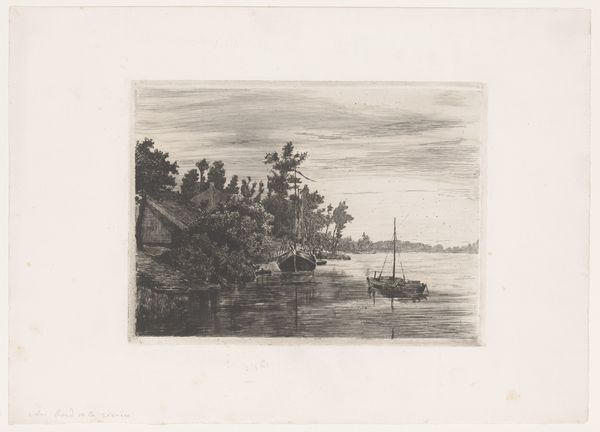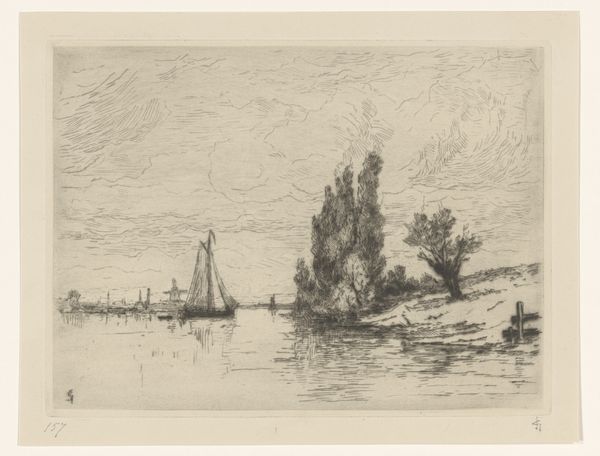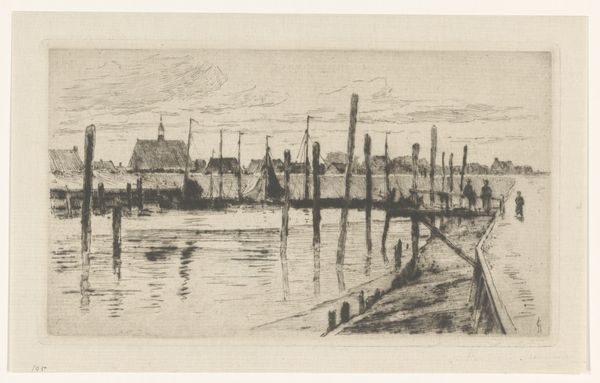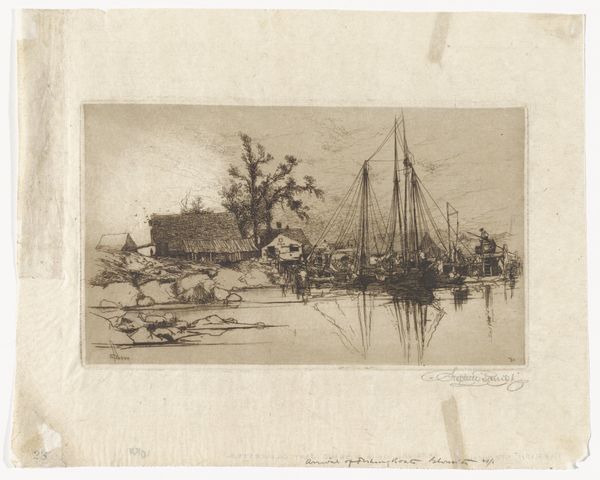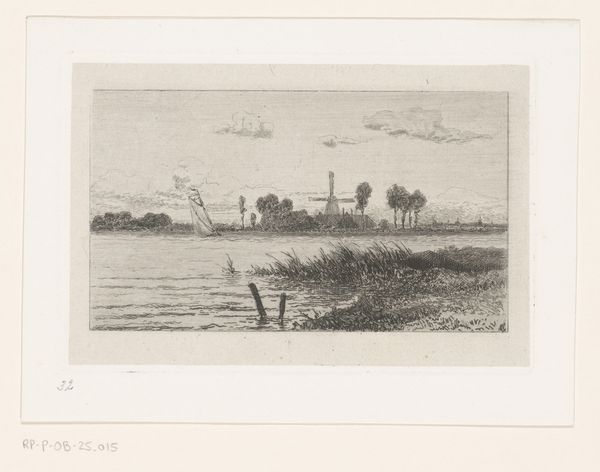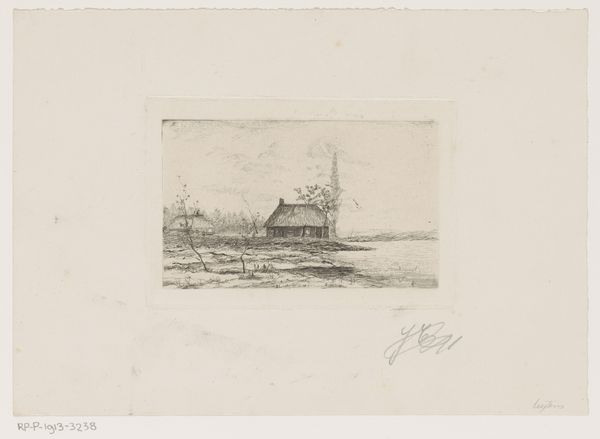
print, etching, watercolor
#
lake
#
dutch-golden-age
# print
#
etching
#
landscape
#
watercolor
#
line
#
realism
Dimensions: height 115 mm, width 176 mm
Copyright: Rijks Museum: Open Domain
Editor: This is "Boerderij aan het Abcoudermeer" by Carel Nicolaas Storm van 's-Gravesande, likely created around 1872. It’s a print – an etching with watercolor, it seems. It has a certain quietness to it, almost melancholic, especially with those muted tones. What stands out to you when you look at this piece? Curator: What strikes me is the intersection of industry and nature depicted in the work, particularly its environmental context. The windmill in the background represents technological advancement, a key marker of Dutch society at the time. However, it’s the presence of water, that constant negotiation with the landscape, that intrigues me. Consider the extensive water management systems required for such landscapes – a testament to human intervention, wouldn't you say? Editor: Yes, definitely. I hadn't really thought about the water management aspect. The lines separating water from land, both blurred and defined, illustrate the artist's engagement with the ever-changing landscape. Curator: Precisely. Think about the social implications too. Who benefits from this land reclamation? Who has access to it? These scenes often romanticize rural life, but we must question whose stories are being told and whose are being erased. The etching as a medium also allows for wider distribution. Were these images intended to shape a particular narrative about the Dutch identity? Editor: That’s a powerful point. I hadn’t considered how the image and its distribution could reinforce existing power dynamics. Curator: These landscapes weren't just pretty pictures; they were statements, reinforcing cultural narratives. The “realism” tag is a misnomer. Realism itself can be highly constructed, a projection of ideology onto the land. Editor: This really reframes how I see the image. I thought it was just a peaceful countryside scene, but it’s so much more complex. Curator: Exactly. By considering the historical and social context, we unveil the layered meanings embedded within seemingly simple images, broadening the narratives surrounding not only art, but of identity, space, and environment itself.
Comments
No comments
Be the first to comment and join the conversation on the ultimate creative platform.
